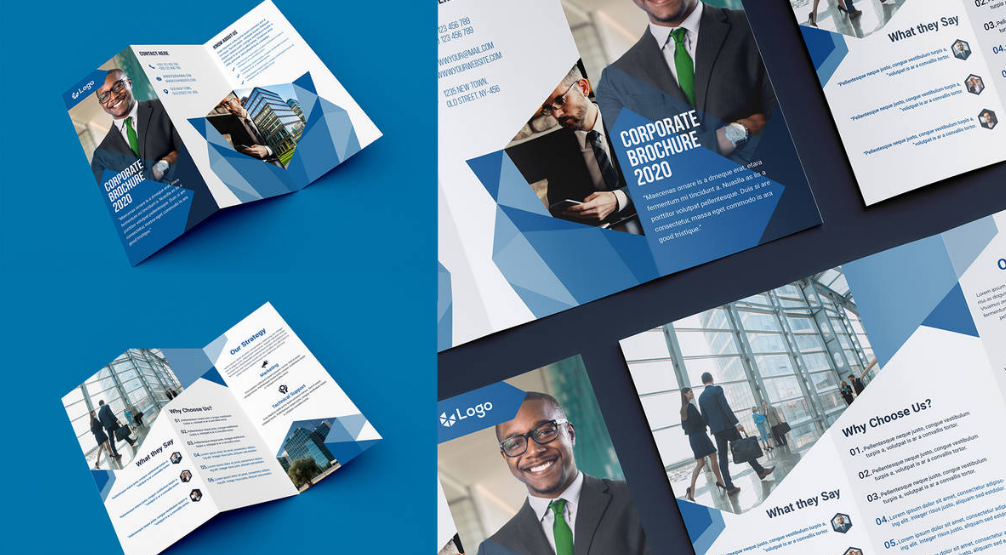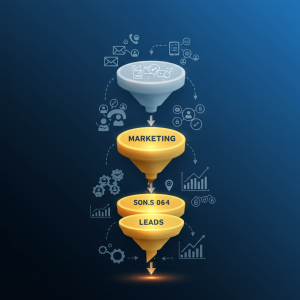Are Brochures Inbound or Outbound Marketing? Analyzing Their Role in Modern Strategy

Marketing has changed dramatically over the past decade, but some tools persist across generations. Take the humble brochure – that glossy, tri-fold piece of marketing collateral that businesses have relied on for decades. But in a world increasingly divided between “inbound” and “outbound” marketing approaches, where exactly do brochures belong?
The Old-School View: Definitely Outbound
Most marketing veterans would immediately classify brochures as outbound marketing without a second thought. Why? Because traditionally, businesses have used brochures as push mechanisms. You print thousands of copies and actively distribute them – stuffing them into mailboxes, handing them out at conventions, placing them in display racks, or including them in press kits.
Think about it. Nobody wakes up in the morning craving your company brochure. Instead, your sales team or marketing department pushes these materials toward potential customers, often interrupting their day. This intrusive quality is exactly what defines outbound marketing.
Jenkins Marketing Research found that people receive an average of 7 unwanted brochures monthly, putting them in the same category as cold calls and unsolicited emails – classic outbound techniques that interrupt rather than attract.
I was talking with a client from a manufacturing firm last week who told me, “We printed 5,000 brochures last quarter and mailed them to everyone in our database. That’s textbook outbound, right?” Yes, but the story doesn’t end there.
Not So Fast: The Inbound Argument
Something interesting happened when brochures went digital. Suddenly, these once-purely-outbound tools gained some distinctly inbound characteristics.
Consider what happens when a prospect visits your website, becomes interested in your offerings, and voluntarily downloads your digital brochure. They sought you out. They chose to learn more. You didn’t interrupt them – they came to you. That’s inbound marketing in action.
According to a HubSpot study on content preferences, 65% of visitors who download informational PDFs (including digital brochures) are already in the consideration stage of the buyer’s journey. They’re actively researching solutions – not being interrupted by them.
My colleague Sarah at OutboundMarketo recently analyzed our clients’ marketing assets and discovered something unexpected: PDF brochures were among the most requested resources by qualified leads who found us through organic search. These weren’t random people we interrupted – they were prospects actively seeking information.
The Reality: It’s All About Implementation
After working with hundreds of marketing teams, I’ve come to realize that asking whether brochures are inbound or outbound is asking the wrong question. The better question is: how are you using them?
The same exact brochure can be outbound or inbound depending on its distribution method and where it appears in your customer’s journey.
When you mail unsolicited brochures to a purchased list of addresses? That’s outbound.
When you optimize a digital brochure for search engines, allowing customers to discover it when researching solutions to their problems? That’s inbound.
The Content Marketing Association reports that companies successfully integrating traditional marketing materials into digital strategies see 37% higher engagement rates. This suggests the most effective approach blends elements of both methodologies.
Digital Transformation Has Changed Everything
Today’s digital brochures bear little resemblance to their paper ancestors. Modern versions offer:
Real-time analytics that show which pages readers linger on and which they skip.
Interactive elements including embedded videos, clickable citations, and dynamic product demonstrations.
Personalization capabilities that customize content based on the reader’s industry, role, or previous interactions with your brand.
Immediate fulfillment – no waiting for something to arrive in the mail.
I recently worked with a software company that embedded their product demo video directly into their digital brochure. When prospects clicked to watch, the sales team received an alert. This transformed a traditionally passive medium into an active lead-generation tool that bridged both inbound and outbound approaches.
Finding the Sweet Spot
The smartest marketers I know have stopped worrying about strict inbound/outbound classifications. Instead, they focus on creating brochures that can function effectively in both contexts.
Take my client in the healthcare space. Their brochure exists as:
- A physical handout for medical conferences (outbound)
- A downloadable PDF on their website (inbound)
- A QR-code activated digital experience in their waiting rooms (hybrid)
The content remains largely consistent, but they’ve designed it to work across multiple touchpoints.
When patients search for “new treatments for arthritis” and discover my client’s website, downloading their brochure feels like a natural extension of their research journey – pure inbound marketing at work. Yet when their sales team distributes the same brochure at medical conventions, it’s functioning as an outbound tool.
Creating Brochures That Work Both Ways
If you’re developing brochures in 2025, consider these practical tips:
Write content that educates before it sells. Educational content performs better in both inbound and outbound contexts because it delivers value regardless of how it reaches your prospect.
Design for both print and digital from the start. Different mediums have different constraints, but planning for both ensures consistency.
Include tracking mechanisms – QR codes in physical brochures can bridge the gap between offline and online engagement.
Make sure your brochure answers the questions customers actually ask, not just what you want to tell them. I’ve seen conversion rates double when companies redesign brochures based on customer interview data rather than internal preferences.
Jasmine, our design director, always reminds clients: “A good brochure doesn’t try to be everything to everyone. It tries to be exactly what someone needs at a specific moment in their decision process.”
Beyond Labels: Effectiveness Is What Matters
Marketing categories like “inbound” and “outbound” are useful frameworks, but they shouldn’t become rigid boxes that limit creativity. The most effective brochures transcend these classifications, functioning wherever your customer encounters them in their journey.
Think of it this way: customers don’t care whether your marketing is inbound or outbound. They care whether it’s helpful, informative, and relevant to their needs.
So while brochures may have started as purely outbound tools, their evolution in the digital age has made them capable of functioning across the entire marketing spectrum. The question isn’t whether they’re inbound or outbound – it’s whether you’re using them effectively to meet your customers where they are.
After all, the best marketing doesn’t feel like marketing at all.





